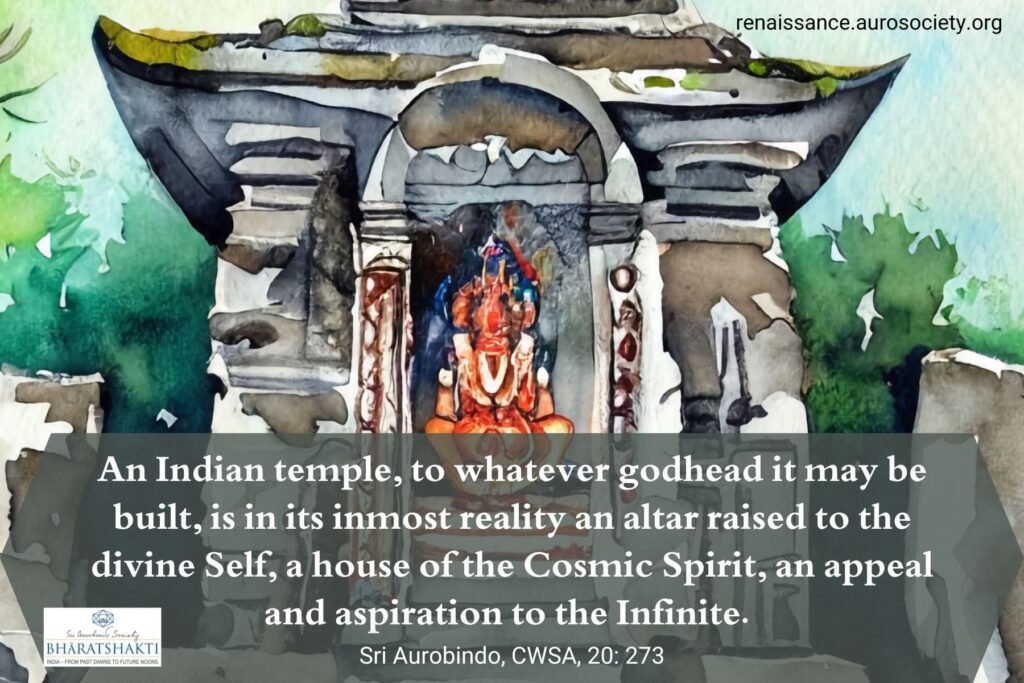Release of Renaissance, Volume VI, Issue 1
Date: January 21, 2025
Excerpt from Editorial by Beloo Mehra
“…everyone who has at all the Indian spirit and feeling, can at least give some account of the main, the central things which constitute for him the appeal of Indian painting, sculpture and architecture.”
~ Sri Aurobindo, CWSA, Vol. 20, p. 261
The sacred buildings of India are the architectural self-expression of an ancient spiritual and religious culture. Only with an inner study we can grasp the true significance of such architecture. It requires a spiritual self-identification with the deepest meaning hidden in the form. Seeing only with a rational and secular aesthetic mind we can never develop a true appreciation of this art.

To an Indian mind, the temple is the representation of the cosmos. And it is so both at the level of the universe and the individual. This is what makes it possible for the devotee to get inspired in a temple. Some may visit a temple merely as a ritual or by habit. But to a conscious seeker and bhakta, a temple is essentially that sacred space where the heart aspires and strives for spiritual transformation. Just like tīrtha-yatra, pilgrimage to sacred places and going for the darshan of the Deity in the temple are intrinsic parts of the dharmic culture of this land.
“Temples are built where Tīrthas are; their towering shapes to the last point of their height teem with forms which have the urge and fullness of Indian nature; step by step, level by level they lead the eye and mind of the devotee from this world to the world above.”
~ Stella Kramrisch, The Hindu Temple, p. 6
Soak in some beauty of Indian temple architecture through this video
One of the most commonly used words for a temple in the architectural texts of India is “Prāsāda”. The word actually denotes a settling down and a seat made of that which has settled down and acquired concrete form. This is the form of a dwelling, a residence, the seat of God. The popular etymological sense of the word Prāsāda, as per Śilparatna, is that which pleases by its beauty, the minds of gods and men.
Unity and Multiplicity in Temple Design
“An Indian temple, to whatever godhead it may be built, is in its inmost reality an altar raised to the divine Self, a house of the Cosmic Spirit, an appeal and aspiration to the Infinite.”
~ Sri Aurobindo, CWSA, Vol. 20, p. 273
If we fail to see an Indian temple in the light of this truth and stay confined to a narrow conception of rational or material beauty and an intellectual interpretation we will never appreciate the true significance of this sacred architecture. An Indian temple is a house of the Cosmic Spirit. Its significance must be experienced through some responding intuition and revelation in us, in our own soul, our own self.
